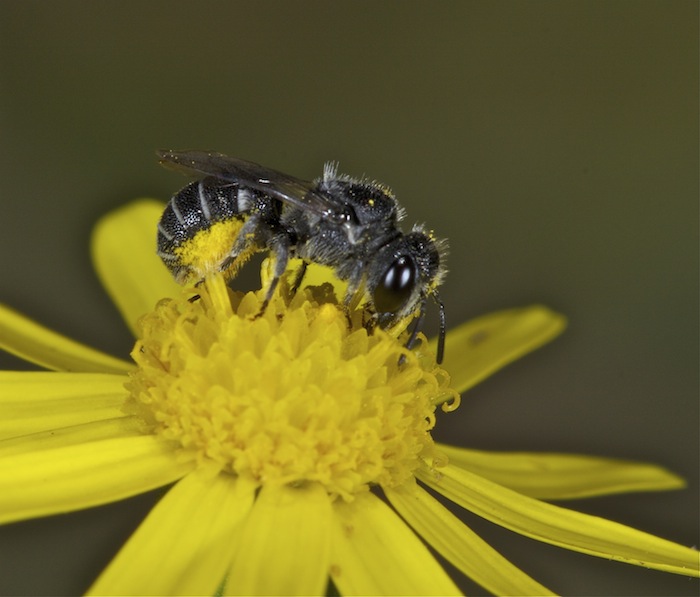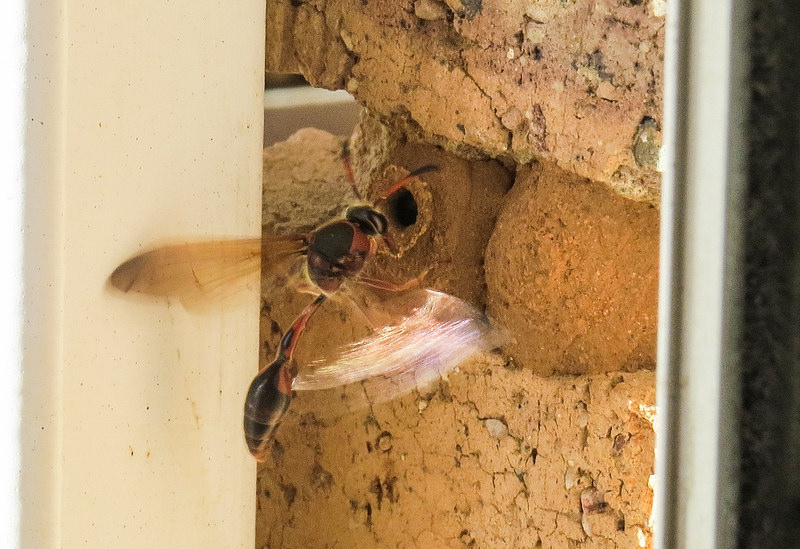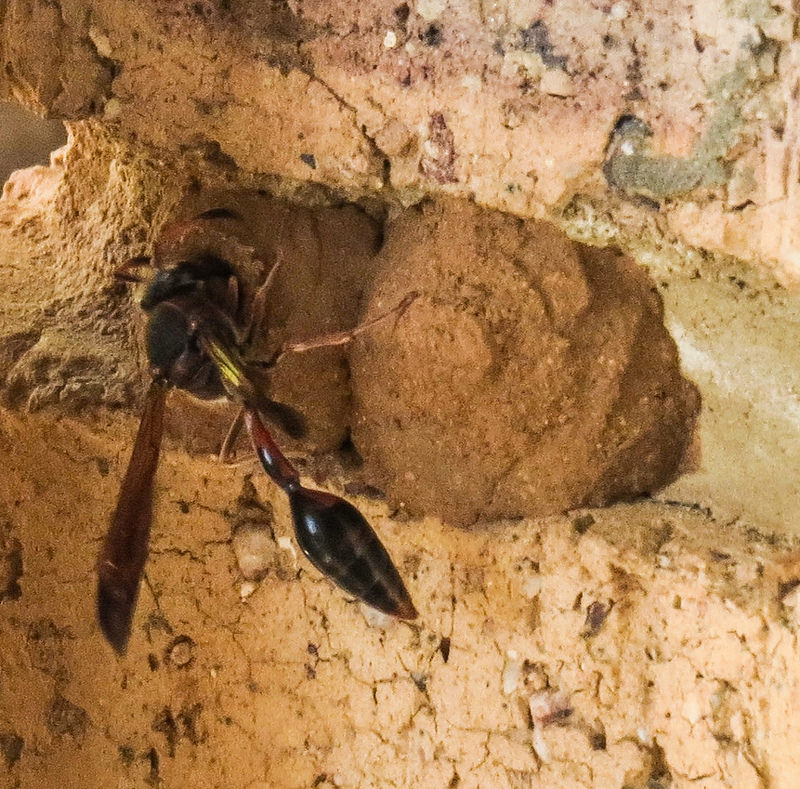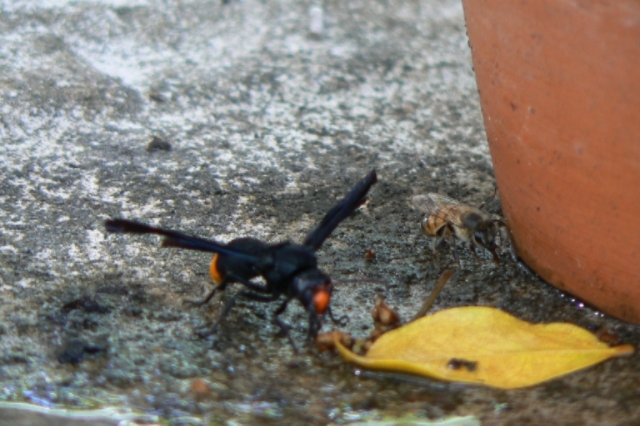Cricket Hunters
Family Sphecidae. Subfamily Sphecinae. Tribe Sphecini
Genus Isodontia
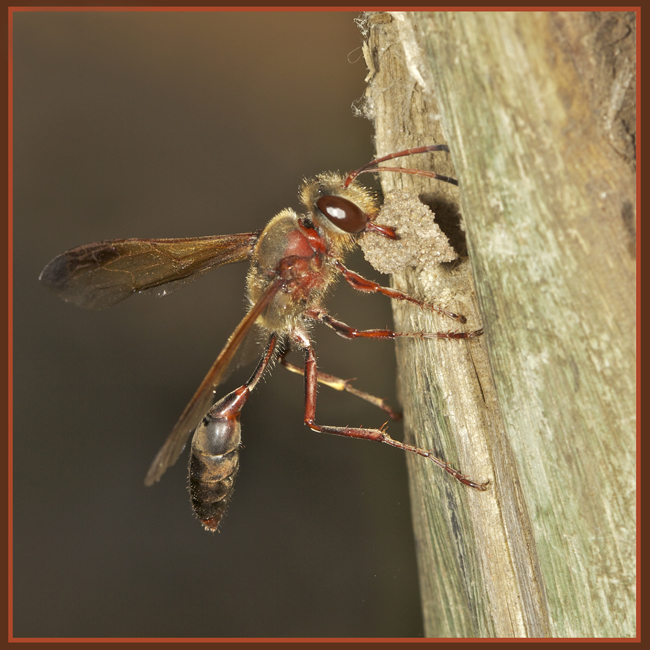 Isodontia longiventris
Isodontia longiventris © ExFmem
The genus
Isodontia was erected by PATTON (1880). Commonly known as the grasscarrying wasps, the
Isodontia consist of 61 valid species within a cosmopolitan genus.
Isodontia wasps are commonly called grass-carriers because, during the breeding season, females carry grass or other plant fibres to make linings and wads as nesting material inside pre-existing cavities. The wasps have a pair of small flanges on the labrum which evidently assist in holding the grass stems during flight.
Isodontia is very closely related to
Sphex Linnaeus 1758 and
Chlorion Latreille 1802, in the tribe Sphecini. However,
Isodontia has lost the tarsal combs of the fore legs, used in digging by the other two genera. Moreover, their slim mandibles cannot be used for scraping soil.
Isodontia nests consist of a linear sequence of cells, usually partitioned by compacted plant fibres. They use grass stems and other plant material to divide up and seal their nest, carrying the stem beneath them in flight. Some species of grass carrier wasps in the genus
Isodontia close their nests with plugs.
They use pre-existing cavities as nest sites e.g. hollow stems, crevices in rocky situations, old bee or wasp burrows in the ground.
Nest structure
The nests consist of a number of serially arranged cells each sealed with a plug, the series frequently being preceded by a preliminary plug and always being succeeded by a closing plug, which completely fills the space between the last cell and the nest entrance (Figure II.3.17–
19).
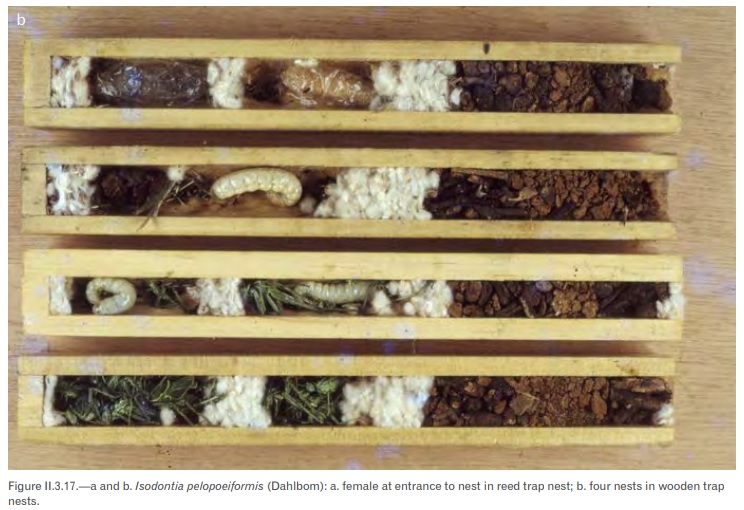
- Nest.jpg (119.97 KiB) Viewed 2907 times
Method of construction
The female collects material for the construction of plugs with her mandibles. She holds them in her mandibles as she flies to her nest. In all three species, whilst the nesting female is compacting the materials, buzzing sounds can be heard within the nest.
When a cell has been prepared for the reception of prey, a temporary closure is constructed from loosely packed material, fluff in the case of I. simoni and I. pelopoeiformis and grass in the case of I. stanleyi, through which the wasp will pass on entering and leaving the cell during provisioning. Hunting is then commenced.
After the full provision for a cell has been supplied the cell is closed. I. simoni seals the cell with compacted clods of earth mixed with a little fluff, leaving the temporary closure intact. However, I. pelopoeiformis and I. stanleyi close their cells by compacting the material, which formed the temporary closure, and adding to this further material of the same nature. In these two species, if a further cell is to be provisioned, a new temporary closure is constructed.
Provisioning and oviposition
After the nest is prepared, the female hunts for crickets, captures and paralyses them with her sting, and transports them to the nest.
A prey katydid is captured, subdued by stinging and its antennae are pruned.
The wasp then holds it with her mandibles and legs, and flies with it held beneath her, head forwards and dorsum uppermost. Having arrived at the nest entrance, I. pelopoeiformis puts down the prey within the entrance, enters, turns around and pulls the prey in towards her. Isodontia pelopoeiformis and I. stanleyi position prey in the cell so that they face the inner end and lie on their backs or on one side. Oviposition is usually on the first prey but may be on the second. I. simoni takes very small prey in relation to the diameter of a cell and positions them so that they lie across the cell. The number of prey per cell varies according to the size of the prey.
She deposits eggs in the nest and the emerging larvae will feed on the living, but immobile crickets. When the larvae reach the appropriate size, they spin a cocoon and pupate.
Links:
https://books.google.de/books?id=xBQlBQ ... er&f=false
https://www.waspweb.org/Apoidea/Sphecid ... /index.htm
https://www.sanbi.org/sites/default/fil ... ies-24.pdf
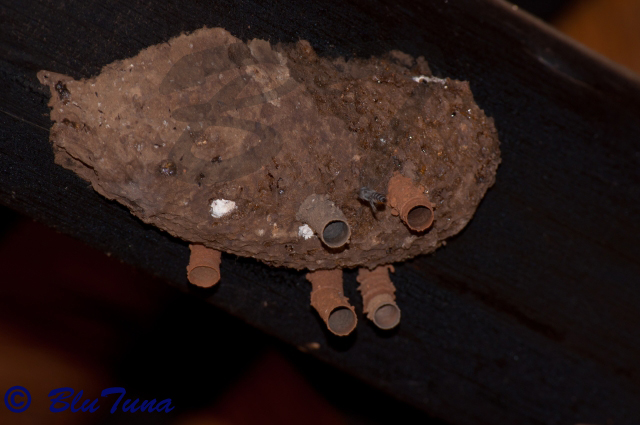 © BluTuna
© BluTuna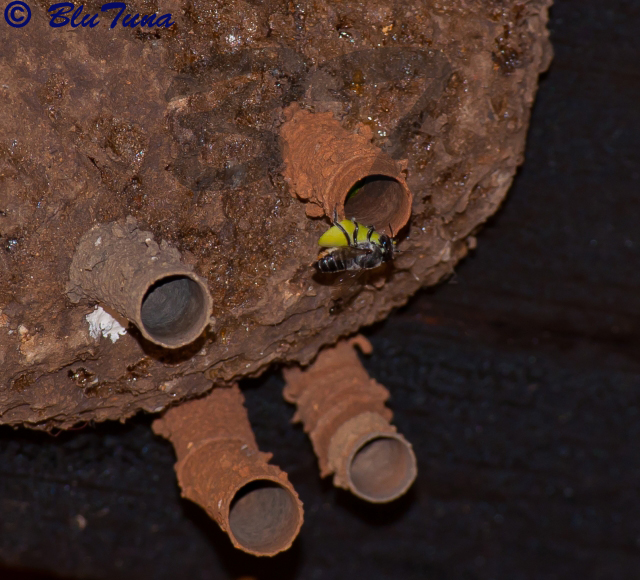 © BluTuna
© BluTuna


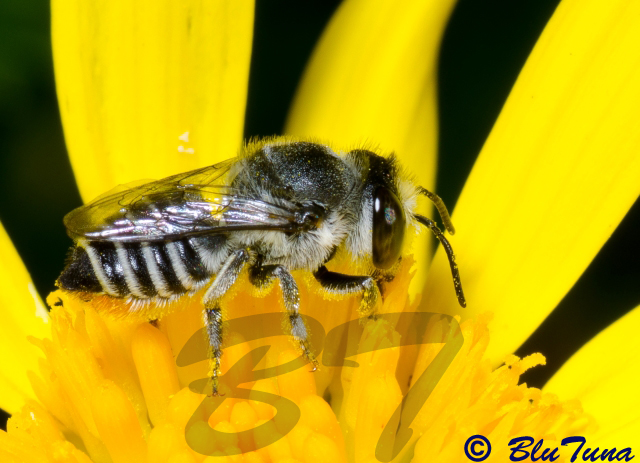 © BluTuna
© BluTuna